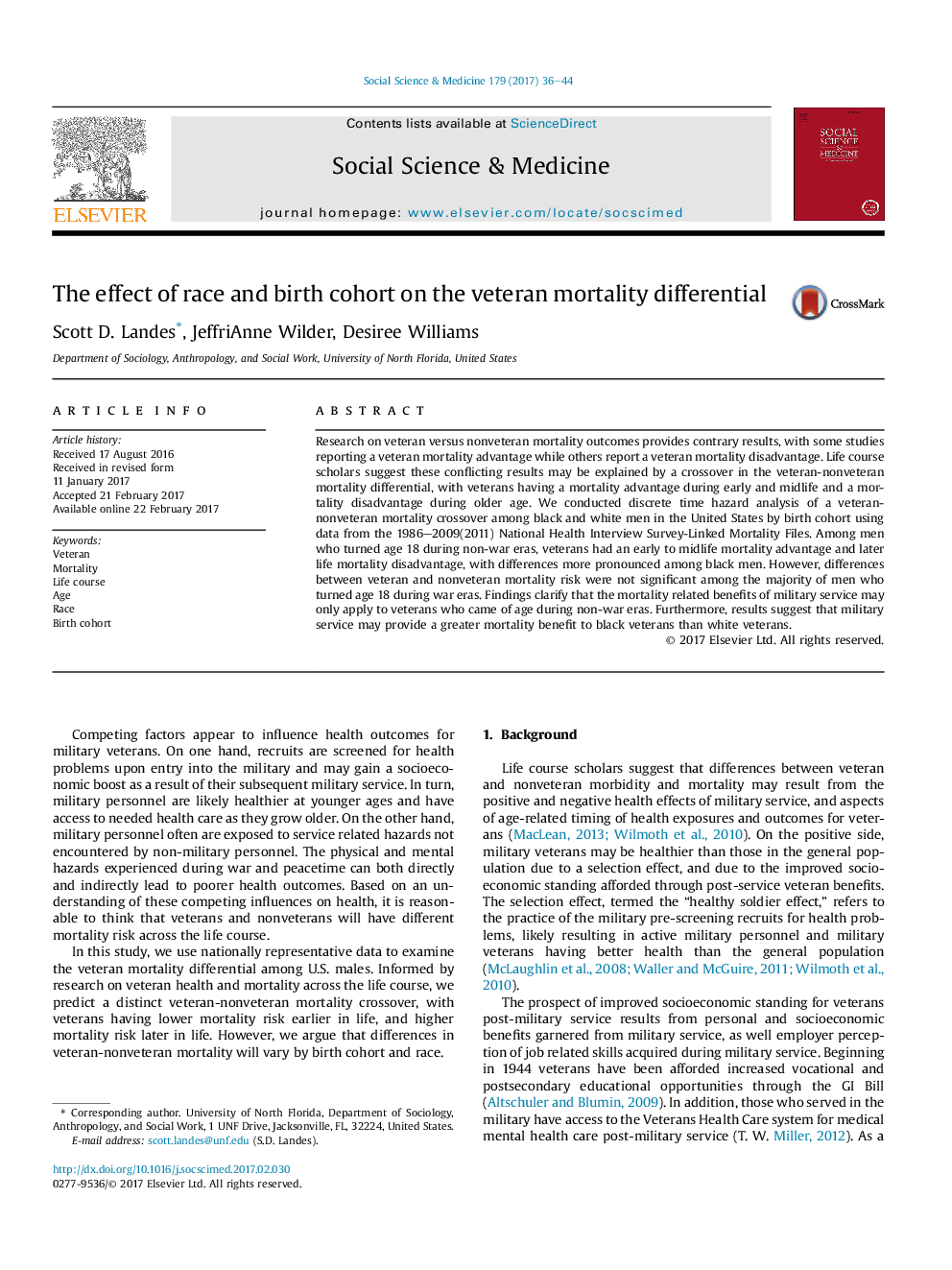| Article ID | Journal | Published Year | Pages | File Type |
|---|---|---|---|---|
| 5046622 | Social Science & Medicine | 2017 | 9 Pages |
â¢Veterans had an earlier life mortality advantage among non-war era birth cohorts.â¢Veterans had a later life mortality disadvantage among the WWI-WWII interim cohort.â¢Veterans did not have a mortality advantage among war era birth cohorts.â¢Veteran-nonveteran mortality differential was more pronounced among black men.
Research on veteran versus nonveteran mortality outcomes provides contrary results, with some studies reporting a veteran mortality advantage while others report a veteran mortality disadvantage. Life course scholars suggest these conflicting results may be explained by a crossover in the veteran-nonveteran mortality differential, with veterans having a mortality advantage during early and midlife and a mortality disadvantage during older age. We conducted discrete time hazard analysis of a veteran-nonveteran mortality crossover among black and white men in the United States by birth cohort using data from the 1986-2009(2011) National Health Interview Survey-Linked Mortality Files. Among men who turned age 18 during non-war eras, veterans had an early to midlife mortality advantage and later life mortality disadvantage, with differences more pronounced among black men. However, differences between veteran and nonveteran mortality risk were not significant among the majority of men who turned age 18 during war eras. Findings clarify that the mortality related benefits of military service may only apply to veterans who came of age during non-war eras. Furthermore, results suggest that military service may provide a greater mortality benefit to black veterans than white veterans.
